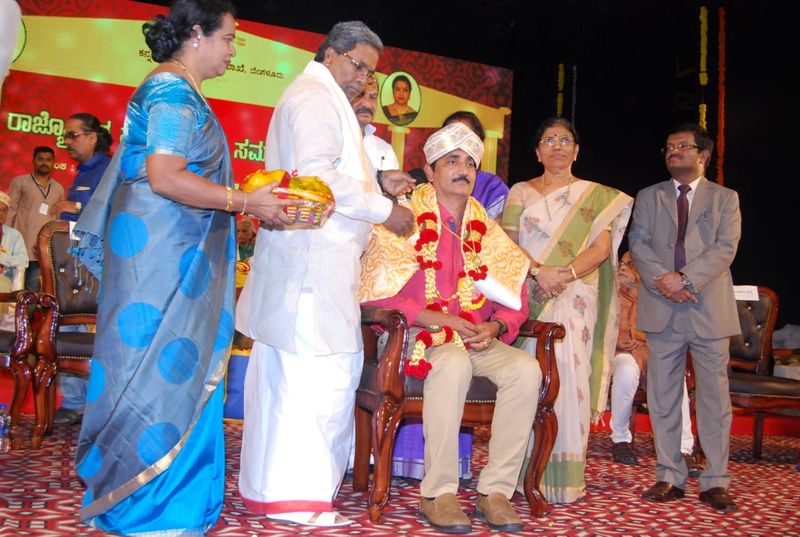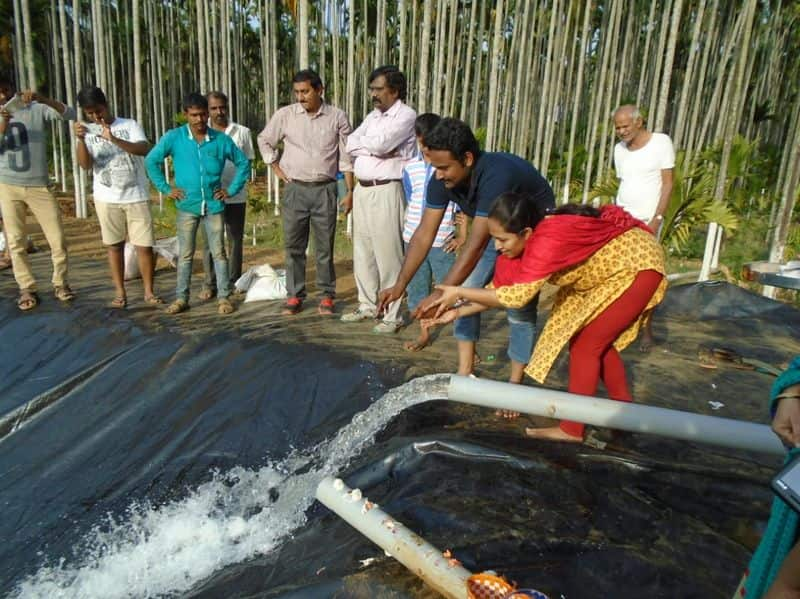Karnataka's water man Devaraj took it up as a challenge and started working on defunct borewells. He began rejuvenating them to improve ground water. He found a way that can be used by farmers too and this is affordable for every common man.
Devaraj Reddy holds masters degree in geology. He is credited with drilling 20,000 borewells in Karnataka in 20 years of his career, until one day when he realised that he ruined the water table of dear mother earth.
Reddy did not stop with repenting alone. He instead took the onus upon himself to set it right. He reset and revived dried-up borewells and gave back mother earth, what he had initially robbed - water. Thus, Reddy became fondly known as Karnataka's water man.
Of the 4 crore borewells in India, at least half of them have gone dry leaving the water table at an alarming condition, Reddy said.
Reddy took it up as a challenge and started working on defunct borewells and began restoring them to improve ground water. He found a way that can be used by farmers and this is affordable for every common man.
Speaking about the increasing number of farmer suicides in Karnataka, Devaraj said that the failure of borewell is the main reason behind this. When there is no enough water for crops, farmers have no way to pay back the loan, Reddy said.
Thus, recharging borewells that are defunct might save the farmers' lives too.

Reddy said, Prime Minister Modi has promised to double farmer's income by 2025. But with borewells restored, many farmers are earning more than double the income, currently.
How to recharge the defunct borewell?
According to Reddy, firstly, a 10 ft deep pit should be dug up. A pipe with 120 holes along with aqua mesh, linen mesh and sand filter must be fixed. Half the pit that's dug up should be filled with boulders. Another 2.5 ft of the pit must be filled with 40 mm sized stones. Remaining 2.5 ft should be covered with 20 mm sized charcoal.
The pit should be finally topped with a sand bed with 6 mm sized chips of stones.
Thus, borewells can be revived by using locally available materials and manpower. This technology can store more water than dams. Unlike dams, this is not harmful to the environment, and is easy to maintain.

According to Reddy, rainwater collected in 1 acre of land can recharge 1 borewell. In Karnataka, Molakalmoor is the place that gets least rainfall. But in one acre land, 20 lakh litres of rainwater can be collected through this method, which will help farmers, when there is no rainfall.
In 2016, Chitradurga zilla panchayat entrusted Reddy with the task of recharging 5000 defunct borewells under MGNREGA scheme.
Not only in Karnataka, Reddy's fame spread across Telangana too as he worked on various water-related projects. Reddy was invited by former chief minister of united Andhra Pradesh Kiran Kumar Reddy and Devaraj reddy was appointed as borewell recharging coordinator and he successfully accomplished the mission of restoring 1 lakh borewells.
This also encouraged him to write a couple of books. Meanwhile, the broadcasting ministry even did a documentary titled Kolave bavige jala mapupoorana (meaning: recharging the borewell).
However, irony is that banks offer loans to drill borewells, but not to recharge defunct ones.
Pragathi Grameena Bank in Chitradurga was the first to offer loan for recharging borewells. More than 2000 farmers have made use of it and are not facing any water scarcity, said Reddy. Once a borewell is recharged, there is no water scarcity for three years, he added. Then the same procedure can be followed. As the pit is already built, it is not costly for the farmers to restore it again.
Reddy said that he is being invited by people during weddings, house warming programmes to give a presentation about how to revive and restore borewells.
"People are getting used to the idea and implementing it widely. This might even lead to mother earth forgiving us for misusing the natural resources and this might be our last chance to save the earth from a catastrophe, caused by man's greed," Reddy said.









Last Updated Oct 16, 2018, 8:27 PM IST











![Salman Khan sets stage on fire for Anant Ambani, Radhika Merchant pre-wedding festivities [WATCH] ATG](https://static-ai.asianetnews.com/images/01hr1hh8y86gvb4kbqgnyhc0w0/whatsapp-image-2024-03-03-at-12-24-37-pm_100x60xt.jpg)
![Pregnant Deepika Padukone dances with Ranveer Singh at Anant Ambani, Radhika Merchant pre-wedding bash [WATCH] ATG](https://static-ai.asianetnews.com/images/01hr1ffyd3nzqzgm6ba0k87vr8/whatsapp-image-2024-03-03-at-11-45-35-am_100x60xt.jpg)



